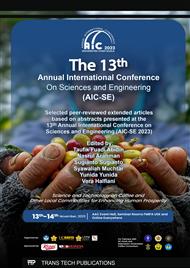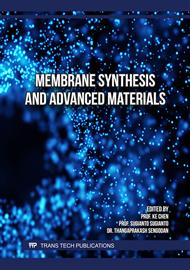p.3
p.15
p.29
p.41
p.53
p.61
p.69
p.81
p.91
Effect of Chemical Cleaning of Hypochlorite Solution on the Properties of Polyethersulfone Blend Membrane
Abstract:
Ultrafiltration membranes have been widely used in industrial technology due to their high removal effectiveness. Long-term use of membranes will reduce membrane performance, so cleaning is required to maintain stable membrane performance. Chemical cleaning has proven to be effective for removing impurities but can also have a negative impact on membrane life. Polyethersulfone (PES) is proven to have strong mechanical properties due to its hydrophobic nature, but this hydrophobic nature makes PES membrane performance less than optimal so a hydrophilic pluronic co-polymer is needed. The combination of these two materials produces a membrane with optimal performance and a relatively long usage time. In addition, this research also aims to compare pure PES (P) and PES/Pluronic (PP) membranes against cleaning using sodium hypochlorite (NaOCl). The results show that the membrane with the addition of pluronic has more stable characteristics than the pure PES membrane. The morphological structure shows a very significant difference after the addition of pluronic, the PES membrane has a finger-like pore structure that is sparse compared to the PES/Pluronic membrane. Based on the data obtained, the water contact angle (WCA) of the washed membrane with NaOCl was higher than the original membrane. The WCA of pure PES membrane increased from 59.5o to 67.5o after cleaning. On the other hand, the WCA of PES/Pluronic membrane was increased from 56.8o to 63.7o after cleaning.
Info:
Periodical:
Pages:
53-59
Citation:
Online since:
December 2024
Price:
Сopyright:
© 2024 Trans Tech Publications Ltd. All Rights Reserved
Share:
Citation:



